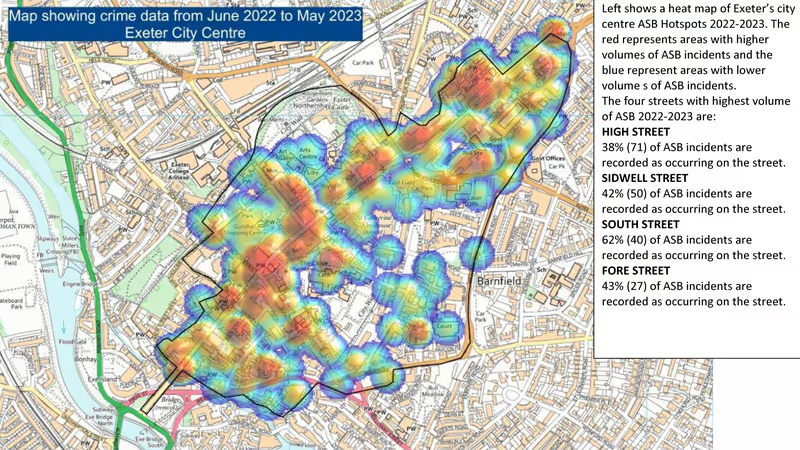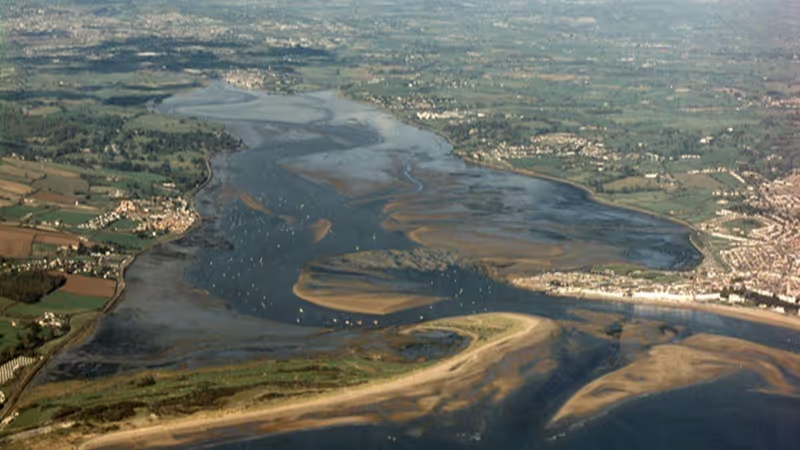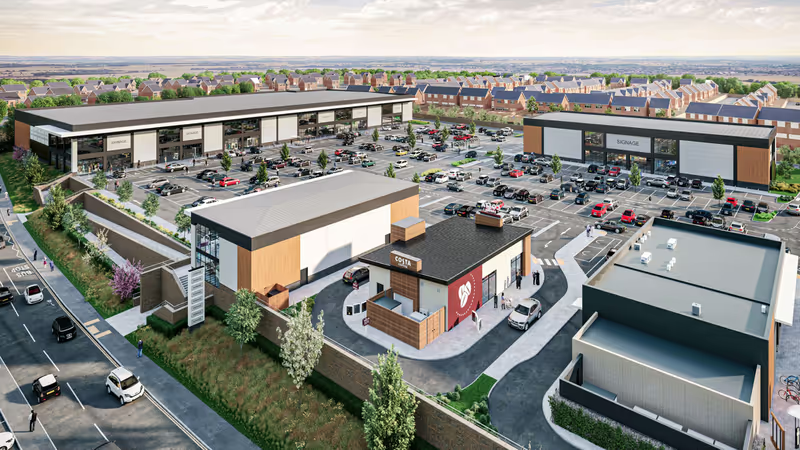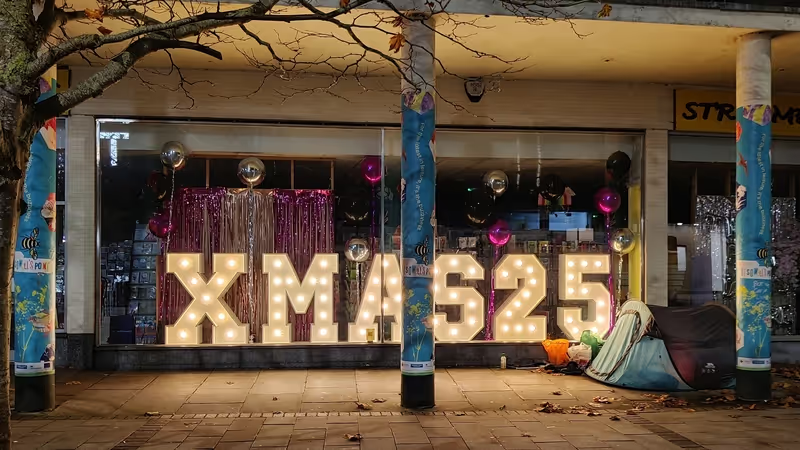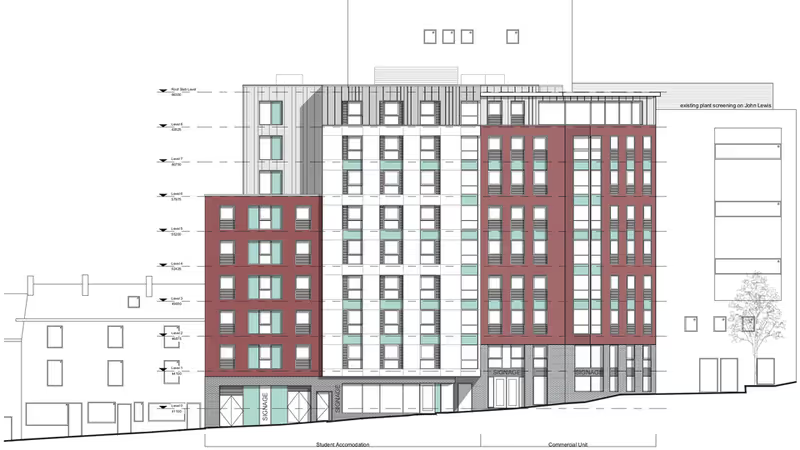Every local transport authority in England is required by law both to “develop policies for the promotion and encouragement of safe, integrated, efficient and economic transport” and to implement those policies.
It is also required to produce a local transport plan setting out these policies and its plans for delivering them on the ground.
Two of Devon’s three local transport authorities, Devon County Council and Torbay Council, are currently consulting on a draft joint 2025-40 local transport plan which covers both local authority areas, as did their 2011-26 local transport plan.
This arrangement precedes the recently-approved devolution deal which is to create a new Devon & Torbay Combined County Authority. This will, among other things, take over transport policy-making and delivery by becoming the area’s local transport authority.
Plymouth City Council, which walked away from devolution discussions this time last year when it became clear it would lose control of local transport along the way, makes its own arrangements.
 Draft 2025-40 Devon & Torbay Local Transport Plan place types map. Source: Devon County Council.
Draft 2025-40 Devon & Torbay Local Transport Plan place types map. Source: Devon County Council.
The production of a new Devon & Torbay Local Transport Plan reflects substantial changes that have taken place since its predecessor was adopted, in particular the importance of transport decarbonisation measures.
More pragmatically, as a county council impact assessment puts it: “An updated local transport plan will place Devon County Council in a better position to make a stronger strategic case for transport investment from government.”
The draft Devon & Torbay Local Transport Plan begins with a vision: “Transport will facilitate sustainable growth and support reaching net zero carbon by 2050 at the latest.”
It continues: “Well-integrated, accessible and inclusive transport will improve travel choice and benefit the health and well-being of everyone.”
Those of us who have suffered missed or non-existent bus and train connections, tried to walk up the stairs at St Thomas station, struggled to negotiate their exit from overcrowded buses, or waited for an hour in the rain for an evening bus home will doubtless welcome this idealistic vision.
Draft 2025-40 Devon & Torbay Local Transport Plan
| Policy objective | Draft plan summary |
|---|---|
| Decarbonisation | Reaching net zero by 2050 at the latest by reducing the need to travel, increasing digital access and shifting trips to sustainable transport and fuels. |
| Reliable and resilient | Protecting and enhancing the strategic road and rail links that connect Devon and Torbay to the rest of the country. |
| Easier travel | Providing well-integrated, inclusive and reliable transport options for all residents and visitors in both rural and urban communities. |
| Unlock development | Supporting clean growth by providing new transport choices within and to new developments and using technology to improve existing infrastructure. |
| Greater places for people | Enhancing the attractiveness of streets by reducing negative impacts from vehicles, regenerating the public realm, and facilitating safe active travel movements. |
| The place to be naturally active | Expanding the multi-use trail network, delivering a network of quieter lanes and improving facilities and safety in urban areas to enable people to be more active and experience our outstanding natural environment. |
Will the plan deliver it? The vision is followed by six policy objectives, above, and accompanied by four investment objectives.
These are to deliver change by “developing transport infrastructure that unlocks development, maintains an efficient and reliable network, supports active travel and reduces the negative impacts of transport such as congestion and pollution.”
These objectives in turn are underpinned by over 30 sub-themes, five connectivity objectives, five area strategies and a list of more than 200 schemes or other actions grouped by area and (sub-)theme.
The draft plan explains that different areas pose “different challenges” which require a “range of solutions” so it includes “strategies for four different place types across Devon and Torbay”.
Hence it provides a strategy and action plan for each of Exeter and Torbay, for four “growth areas” (focussed on Barnstaple/Bideford, Tiverton/Cullompton, Newton Abbot and the urban edges of Plymouth) and for everywhere else, categorised as rural Devon and market/coastal towns.
Another section, titled “Connecting Devon and Torbay”, covers strategic road, rail, air and digital connectivity enhancement, both within the area and also with the rest of the UK and further afield.
It envisages “targeted investment in key corridors” for a “reliable network that is resilient to the impacts of climate change and seasonal travel demands” so the area “remains an attractive place for business and tourism”.
 Devon districts and Torbay home work and travel to work patterns (people aged 16 and over in employment). Source: ONS.
Devon districts and Torbay home work and travel to work patterns (people aged 16 and over in employment). Source: ONS.
Notwithstanding this elaborate categorisation system, the draft Devon & Torbay Local Transport Plan as a whole amounts to distinctly less than the sum of its parts. The real extent of its ambition is reflected in the absence of key actions to address the region’s fundamental mobility problems.
The scale of the challenge is illustrated in Office for National Statistics 2021 Census data that captures how many people work from home and by which mode those who do not travel to work.
Car travel is the majority option for all areas except Exeter, where it is still the principal mode, and still dominates in Greater Exeter area towns which have regular rail and/or bus services.
Public transport makes up only a small minority of journeys across the area. And while 2017 data used to develop the abandoned Greater Exeter Strategic Plan suggests its use may have been depressed when the census took place, the pandemic’s impact was not so great as to disrupt the main trends.
 Greater Exeter towns home work and travel to work patterns (people aged 16 and over in employment). Source: ONS.
Greater Exeter towns home work and travel to work patterns (people aged 16 and over in employment). Source: ONS.
There are no serious measures in the draft Devon & Torbay Local Transport Plan aimed at reducing private car use. Encouraging a shift to electric vehicles may contribute to reducing engine emissions but it does nothing to discourage driving.
Without steps to reduce traffic volume and the congestion it causes the hoped-for shift to public transport – principally to buses that serve the bulk of Devon’s population in urban settlements – simply will not happen.
Congestion will ensure that buses will continue to be unpunctual with “unnecessarily long and unreliable journey times”, as the county council put it in one recent report.
This is such a major omission that it casts doubt on the value of the whole plan. While its list of schemes includes measures to ease bus flows on the main corridors in and out of Exeter, it does not address congestion in the city centre, through which all of Exeter’s bus routes pass.
Actions such as: “Review city traffic signal controls and locations, including smarter corridors”, promise little or nothing to address the non-prioritisation of buses at key pinch points.
These include the Exe Bridges gyratory at one end of the city centre and the Sidwell Street junctions at the other, through which buses frequently take a long time to pass.
 Devon County Council area Ultra Low Emission Vehicles (ULEVs) vs other motor vehicles. Source: Department for Transport.
Devon County Council area Ultra Low Emission Vehicles (ULEVs) vs other motor vehicles. Source: Department for Transport.
Another major Exeter-related failing is the absence of a strategy to deal with the inherent tension between people who live outside the city and want to drive in and out and residents who do not want rural cars to cause congestion in its already-crowded streets.
Apart from a proposal to “encourage” lift sharing and an aim to “protect and enhance integration of bus service with railway stations” there is nothing new to get rural dwellers out of their cars instead of driving them into the city.
The draft plan instead continues to present a “Devon Metro” rail scheme as an alternative to car travel. Its “aspirations” include half-hourly services linking Exeter with Axminster in one direction and Barnstaple in the other.
Other lines already have a partial half-hourly service, though some stations - such as St James Park and St Thomas - are only served by one train each hour outside peak times. The only change that is proposed is an increase to quarter-hourly services between the city centre and Digby & Sowton.
A proper metro scheme would have a service frequency that would make reference to a timetable unnecessary. Ten minute service intervals should be the goal but the dominance of single track in much of Devon prevents this.
The limitations of rail are obvious. Apart from track and train capacity the location of stations is another definitive constraint. Data from the 2021 census shows that outside Exeter - which is an exception - few people can easily walk to a railway station.
 Devon residents within fifteen minutes’ walk of a rail station. Source: ONS.
Devon residents within fifteen minutes’ walk of a rail station. Source: ONS.
So if not rail, what about some innovative thinking on bus services? While hardly original, better co-ordination of bus and train services does figure in the draft plan.
It highlights schemes that improve connections between buses and trains, specifically at Okehampton and Totnes, although these are already in place.
In Exeter, the draft plan envisages an “enhanced bus to rail interchange at Polsloe Bridge”. How this will be achieved without major works to make Polsloe Bridge station accessible is not explained.
We highlighted access challenges at some of Exeter’s railway stations earlier this year. Exeter MP Steve Race says he has since taken up the matter, but the recent budget imposed real-terms reductions in transport spending over the next two years.
The draft plan also restates the much-trailed but never developed proposal for a “single ticketing platform for multi-modal travel in Exeter”.
 Draft 2025-40 Devon & Torbay Local Transport Plan strategic connections map. Source: Devon County Council (which was unable to provide a higher-resolution copy).
Draft 2025-40 Devon & Torbay Local Transport Plan strategic connections map. Source: Devon County Council (which was unable to provide a higher-resolution copy).
So much for what the draft Devon & Torbay Local Transport Plan does say. As the principal strategic policy expected to guide transport decision-making for the next fifteen years it is more remarkable for what it does not include.
Perhaps most prominently, instead of outlining ideas arising from the government’s announcement that powers to franchise bus services will be made available to all local transport authorities, it simply ignores this key opportunity.
It also fails to prioritise the schemes it does propose in any coherent way. References to the importance of individual schemes are dotted around the document without any comparative clarity.
Rail users might take comfort that “a resilient rail network that can withstand flooding and sea level rise is an immediate priority” until they see that “enhancing mobile connectivity on trains” is also “a priority for the region”.
Cyclists in Torbay might be pleased that “an attractive route for cycling, identified as the Hospital Trail and parts of the Torquay Town Trail, represent [sic] our highest priority sections”. But only until they see references to Exeter’s Local Cycling and Walking Infrastructure Plan, which lists twenty cycling schemes in priority order, with a delivery target of one scheme per year.
And drivers in Devon’s market and coastal towns might well be pleased with the high proportion of capital spending that the county’s trunk road schemes receive until they notice that the draft plan’s section on these places ends by saying its “initial priority” will be the provision of car club vehicles.
 Draft 2025-40 Devon & Torbay Local Transport Plan action plan “indication of priorities” summary. Source: Devon County Council.
Draft 2025-40 Devon & Torbay Local Transport Plan action plan “indication of priorities” summary. Source: Devon County Council.
Readers might be forgiven for wondering how these priorities were identified and how they rank against one another as well as some of the more significant projects elsewhere in the plan.
The best the county council seems to be able to manage is an “indication of priorities” included in a “summary booklet” that accompanies the draft plan, but does not form part of it.
Nor does the absence of any delivery timetabling help in assessing the plan’s realism, and scheme costs don’t even rate a mention. Various possible sources of funding are identified but without estimates of the amounts involved or the likelihood of success in securing it.
Indeed, it is difficult to resist the conclusion that the draft 2025-40 Devon & Torbay Local Transport Plan is little more than a wish list of schemes in search of a narrative.
And when it comes to scheme delivery risks, local decision-makers are spoilt for choice in the number of factors that could derail its ambitions.
Quite apart from funding (or lack of it) and unanticipated transport policy changes, the plan’s governance is in a state of flux, and may well be replaced soon after it comes into force.
Last month Jim McMahon, Minister for English devolution, gave little comfort to those who believe or hope the creation of the new Devon & Torbay Combined County Authority will mark the end of local government reorganisation in the South West.
He said that the government agreed the Devon and Torbay devolution deal on the basis that area will look to work towards adopting a mayor, and it would be “ridiculous” for one district to be able to veto the establishment of a mayoral regional authority.
His remarks followed a government announcement saying it would encourage Devon’s leaders to “deepen” the deal and to “take strides towards mayoral devolution as a gold standard” in which it also said it was “encouraging” several areas, including Devon and Cornwall, to “continue working to explore the next steps towards deeper and wider devolution”.
It added: “The government strongly believes that the benefits of devolution are best achieved through the establishment of combined institutions with a directly elected leader.”
The budget document then confirmed that an upcoming white paper on English devolution will “set out more detail on the government’s devolution plans, including on working with councils to move to simpler structures that make sense for their local areas, with efficiency savings from council reorganisation helping to meet the needs of local people.”
Any local government reorganisation that combines Devon and Torbay with Plymouth and Cornwall into a larger regional authority is likely to have major repercussions for local transport policy as well as those who end up making it.
Comments on the draft 2025-40 Devon & Torbay Local Transport Plan can be submitted until 30 November via the Devon County Council website.
